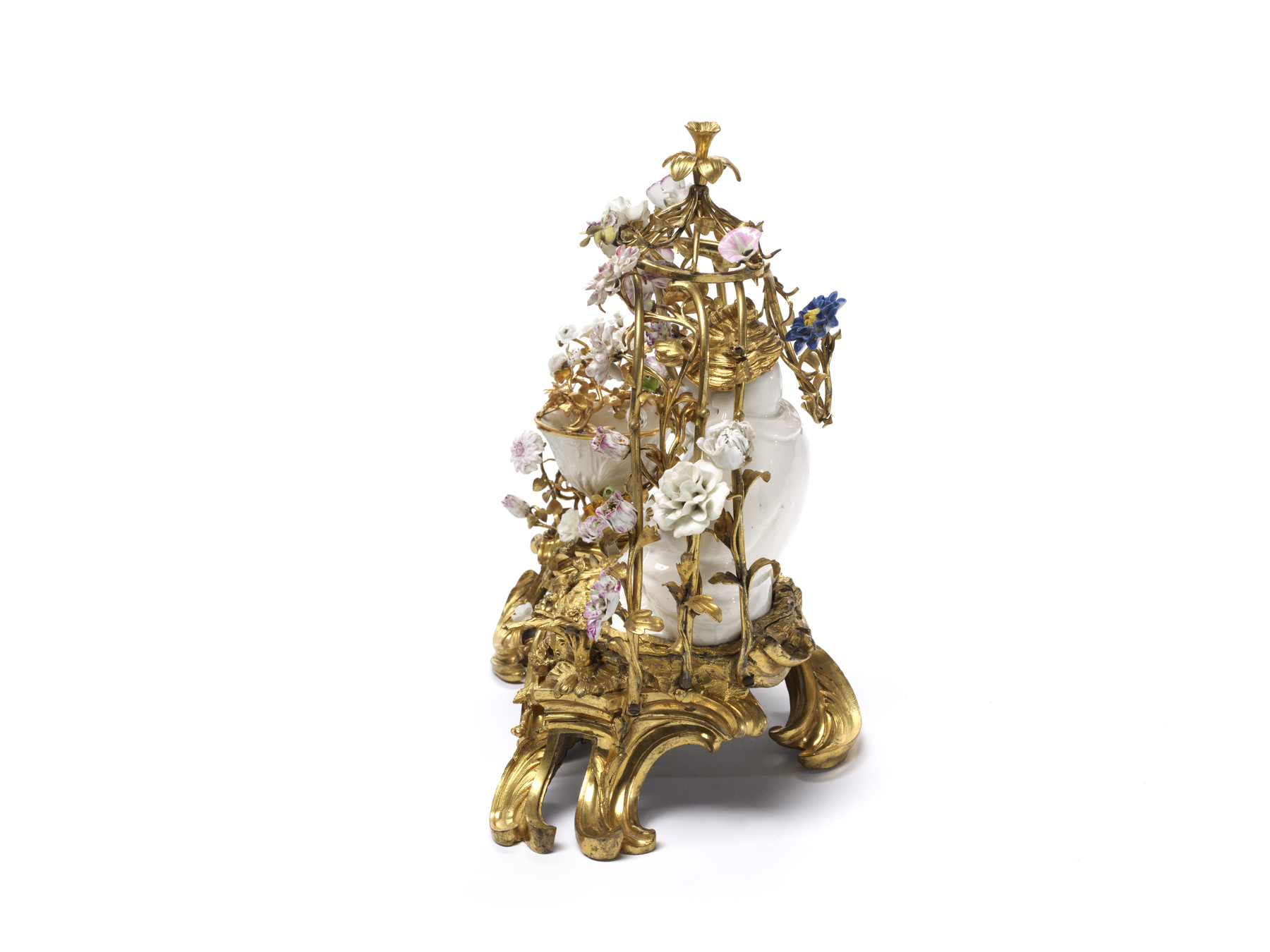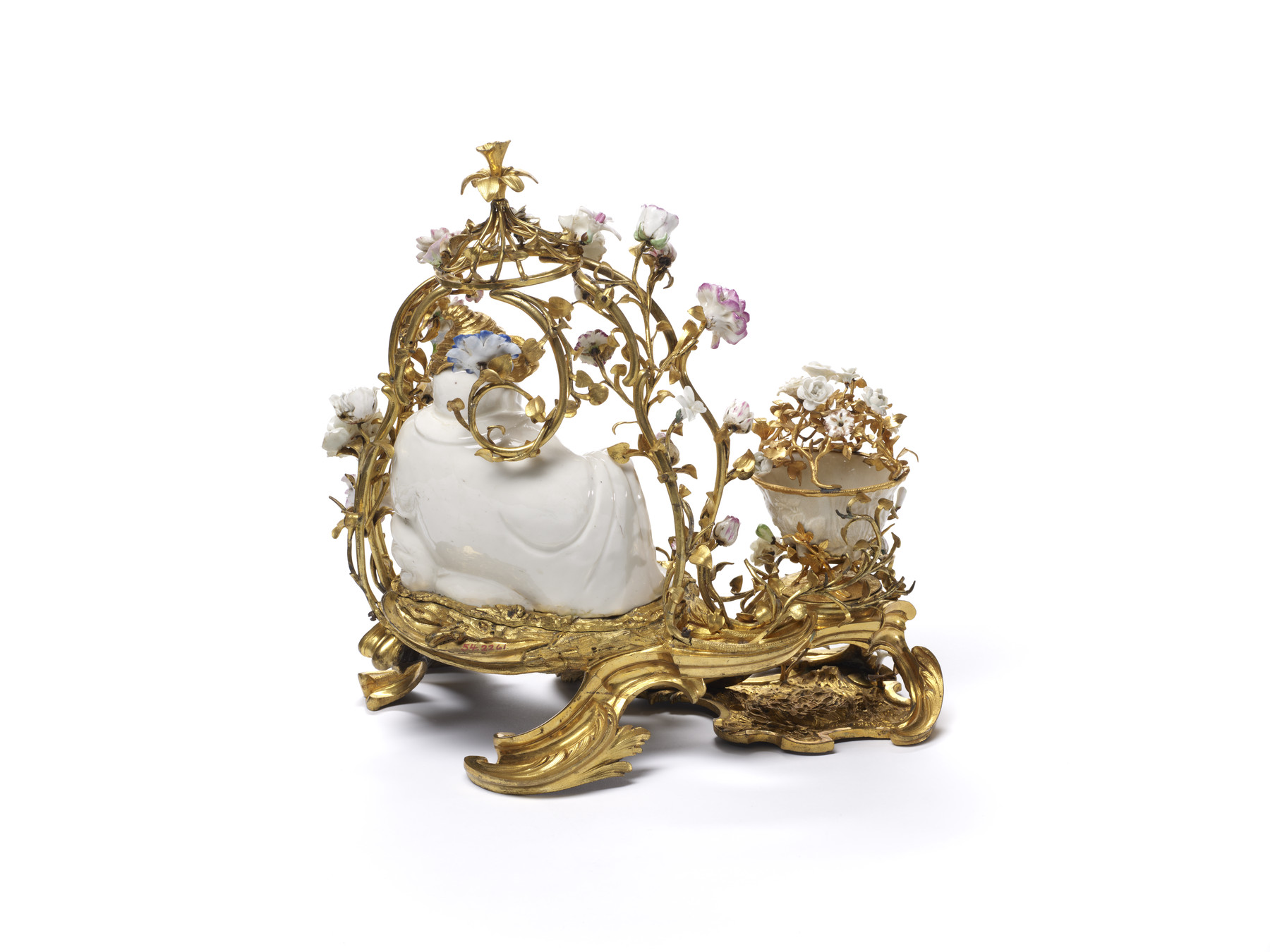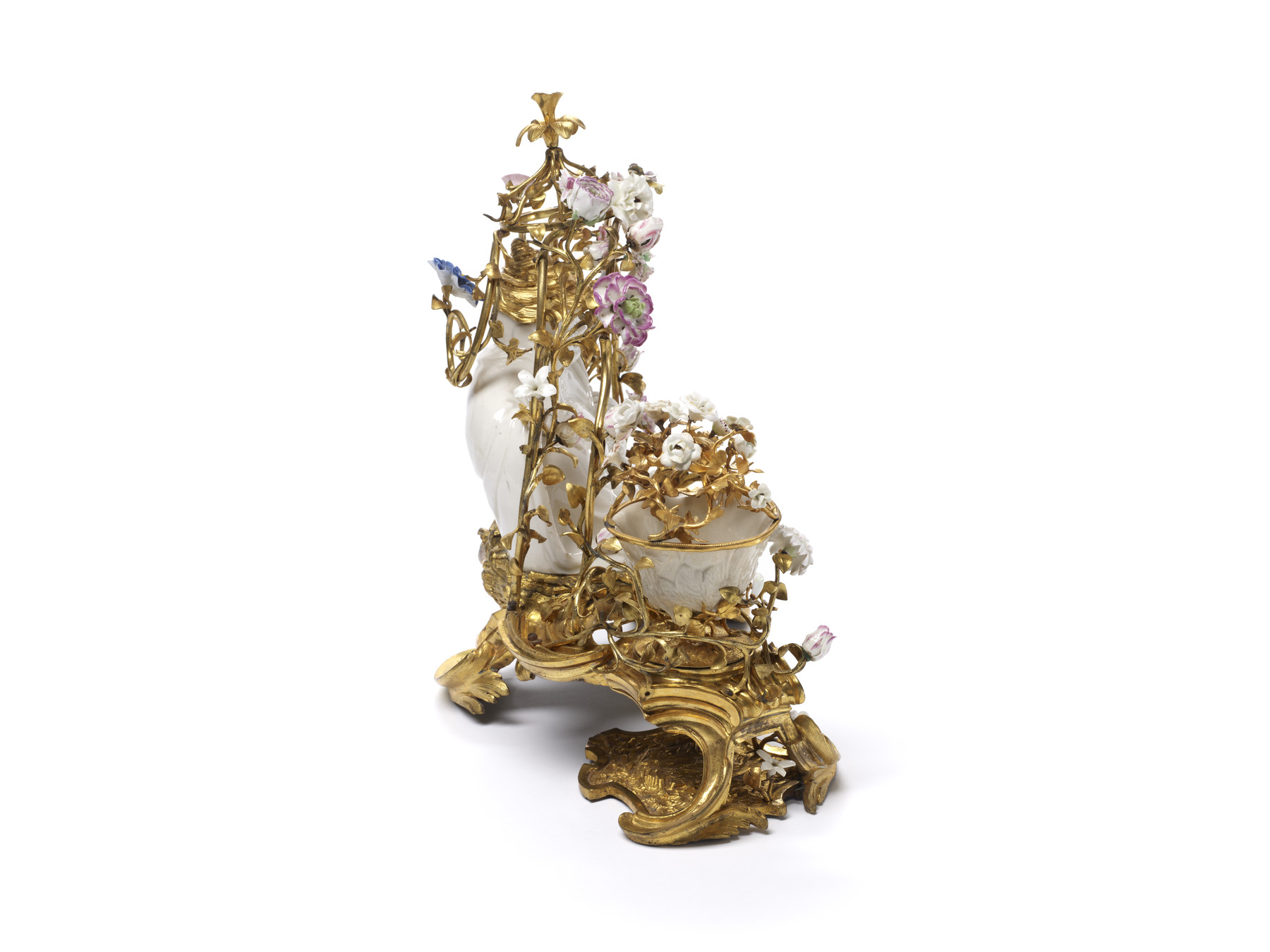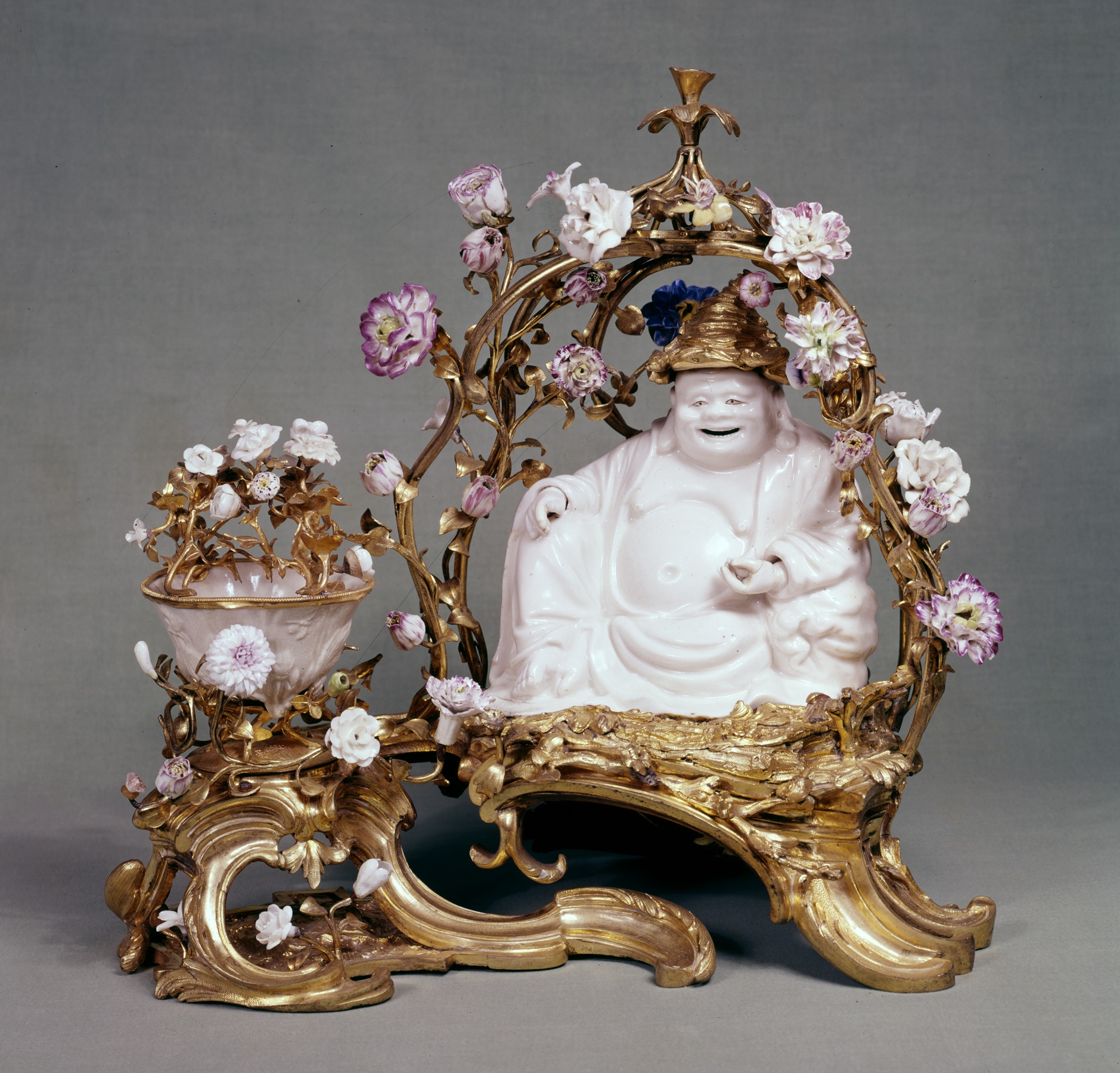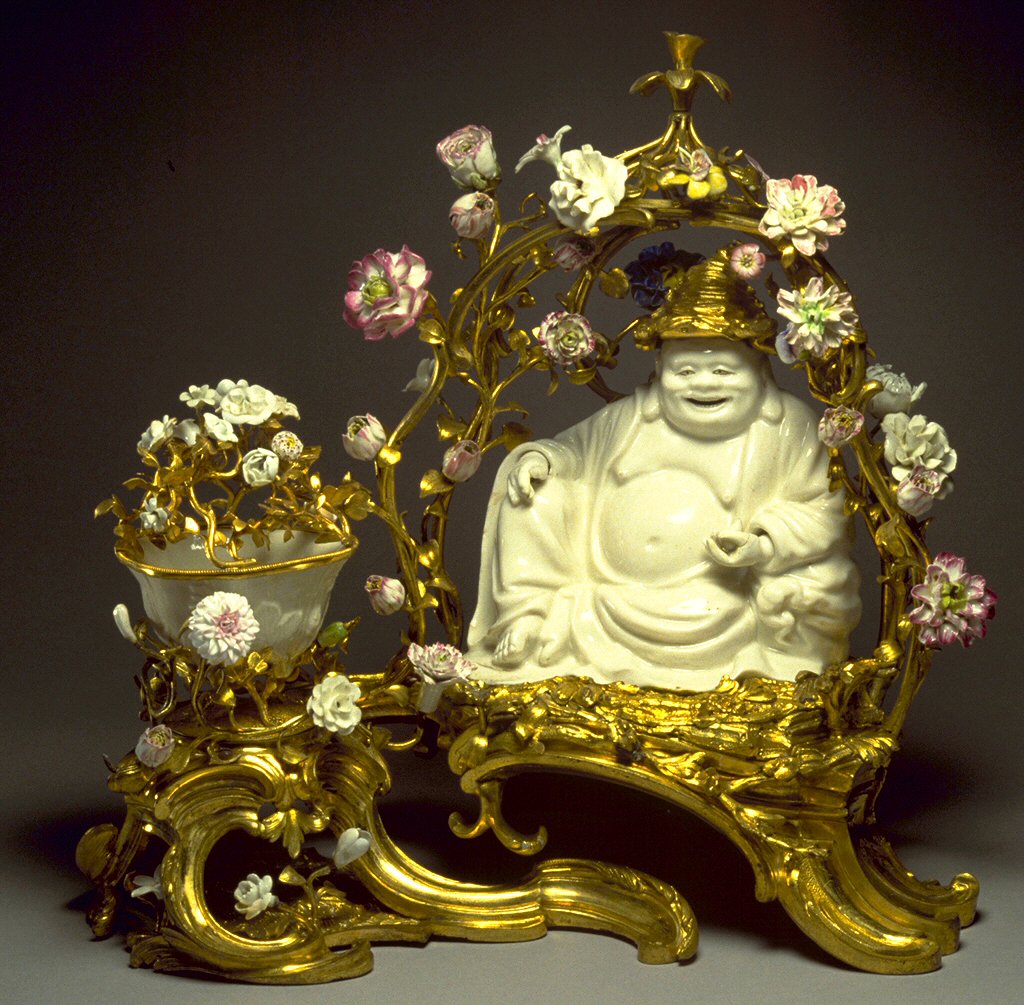Scent Container with Figure of Budai Heshang
(18th and 19th Centuries )
This is an example of the 18th-century craze for “Chinoiserie:” objects and decorative schemes created in what was understood to be a Chinese style, or in combination with Asian imports, for instance ceramics or lacquer. Here Chinese porcelains, a figure of folkloric deity Budai Heshang and a wine cup, are framed in an elaborate asymmetrical gilded bronze (ormolu) arbor covered with porcelain flowers of French manufacture. The Walters’ collection is particularly rich in mounted porcelains. Such objects were assembled by purveyors of luxury goods (marchand-mercier) who steered fashion in 18th-century France.
The function of this object is not entirely clear, although it is possible that the wine cup could have been used to contain potpourri, a sweet smelling mixture of dried flowers and imported spices among other ingredients. It has also been suggested that the cup may have replaced a metal perfume burner, or the object may have been otherwise reconfigured. Decorative pieces such as this were prone to breakage and high maintenance, as the porcelain flowers are very delicate and hard to clean. This fragility added to their luxury status. In fact, the flowers, which were manufactured at the Vincennes factory near Paris by female workers, were a craze in the mid-18th century and created their own economic boom and bust due to over production.
In this piece the Chinese deity is made humorous and further exoticized by the addition of a metal cap, indeed, the ensemble reframes and repurposed Chinese ceramics for use in a European interior with no regard to their original function. This typifies the highly ambivalent and often patronizing attitude of Europeans to Asian culture at this time. (An image of a blanc de chine figure of Budai Heshang dating from the K’ang-hsi Period (1622-1722) can be found in Chinesisches Porzellan im Residenzmuseum Müchen, by Hubert Brunner, figure 54.)
Inscription
Provenance
Provenance (from the French provenir, 'to come from/forth') is the chronology of the ownership, custody, or location of a historical object. Learn more about provenance at the Walters.
Henry Walters, New York [date and mode of acquisition unknown]; Sadie Jones (Mrs. Henry Walters), New York, 1931, by inheritance; Joseph Brummer, New York [date of acquisition unknown], by purchase; Walters Art Museum, 1941, by purchase.
Exhibitions
| 1995 | The Allure of Bronze. The Walters Art Gallery, Baltimore. |
| 1980-1981 | Chinese Porcelains in European Mounts. China Institute, New York. |
Conservation
| Date | Description | Narrative |
|---|---|---|
| 10/26/1960 | Treatment | cleaned |
| 9/3/1970 | Loan Consideration | examined for loan |
| 1/28/1985 | Treatment | cleaned |
| 4/1/1985 | Loan Consideration | examined for loan |
| 7/22/1986 | Loan Consideration | examined for loan |
Geographies
France (Place of Origin)
Measurements
H: 13 9/16 × Max W: 13 7/8 × Max D: 8 in. (34.5 × 35.2 × 20.3 cm)
Credit Line
Museum purchase [formerly part of the Walters Collection], 1941
Accession Number
In libraries, galleries, museums, and archives, an accession number is a unique identifier assigned to each object in the collection.
In libraries, galleries, museums, and archives, an accession number is a unique identifier assigned to each object in the collection.
54.2261


